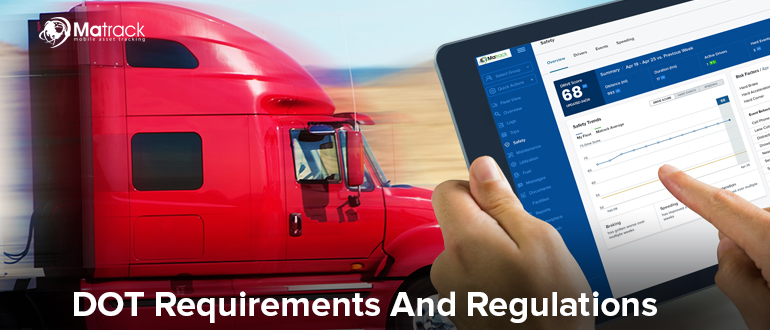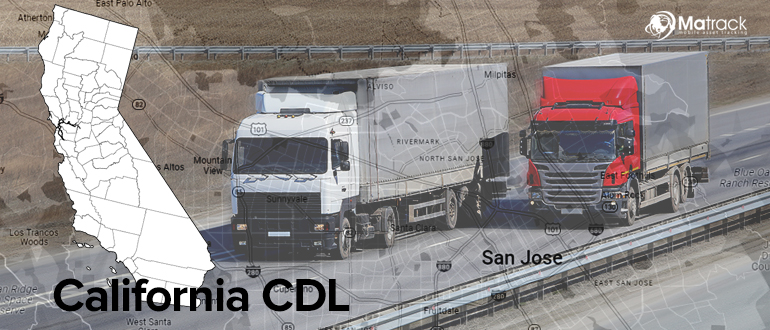Key Takeaways
- DOT regulations ensure safety and compliance for CDL truck drivers by setting rules for licensing, driving hours, and conduct.
- CDL drivers must have a valid medical certificate, pass drug tests, and complete daily vehicle inspections to meet DOT requirements.
- Using Electronic Logging Devices (ELDs) and following weight and cargo securement rules is mandatory under DOT regulations.
- Non-compliance with DOT rules can result in fines, license suspension, or job loss, making it essential to stay updated and maintain accurate records.
What Is the DOT, and Why Are Its Regulations Important?
The Department of Transportation (DOT) is a federal agency that makes rules to keep transportation safe and efficient in the United States. This includes setting important guidelines for CDL truck drivers and the trucking industry.
For CDL truck drivers, DOT regulations:
- Keep Everyone Safe: Rules are designed to prevent accidents and protect drivers and others on the road.
- Ensure Proper Training: CDL truck drivers must pass tests and meet standards to safely handle commercial vehicles.
- Avoid Dangerous Practices: Limits on driving hours and regular vehicle checks help prevent accidents caused by fatigue or poor maintenance.
DOT CDL Requirements for Truck Drivers
To legally operate a commercial motor vehicle (CMV), drivers must meet specific DOT CDL requirements, which focus on licensing, health, and compliance. Below is a clear breakdown of these essential requirements:
Obtaining a CDL License
To legally drive a commercial truck, you need to:
- Meet Age Requirements: Be at least 18 years old to drive within the same state (intrastate) and 21 years old for driving across states (interstate) or transporting hazardous materials.
- Pass Written and Skills Tests: Prove your knowledge of trucking rules through a written test and your driving ability with a skills test.
- Provide Proof of Residency: Submit documents like a driver’s license or utility bill to confirm your identity and legal residency.
Medical Certification
Every CDL truck driver must have a valid DOT Medical Examiner’s Certificate, which shows they are fit to operate a commercial vehicle. The certification includes:
- Vision Check: Drivers must have at least 20/40 vision in each eye, with or without glasses or contact lenses.
- Hearing Test: You must be able to hear a whispered voice from 5 feet away without hearing aids or with them if needed.
- Health Evaluation: Medical conditions like epilepsy or heart problems may disqualify a driver if they interfere with the safe operation of a CMV.
This certificate is valid for two years unless the medical examiner sets a shorter period.
Drug and Alcohol Testing
Compliance with DOT drug and alcohol testing regulations is mandatory. CDL truck drivers are required to participate in:
- Pre-Employment Testing: A drug test before starting work as a CDL driver.
- Random Testing: Periodic, unannounced drug and alcohol tests during employment.
- Post-Accident Testing: Required after certain types of accidents involving injuries or damage.
- Reasonable Suspicion Testing: Performed when an employer observes behaviour that suggests drug or alcohol use.
Failing or refusing these tests leads to disqualification and possible license suspension.
Hours of Service (HOS) Regulations
To reduce driver fatigue, DOT hours-of-service (HOS) regulations set strict limits on driving and work hours:
- 11-Hour Driving Limit: Drivers can drive up to 11 hours after taking at least 10 consecutive hours off duty.
- 14-Hour On-Duty Limit: A driver’s work shift, including driving and non-driving tasks, cannot exceed 14 consecutive hours.
- 30-Minute Break Rule: After eight hours of driving, a 30-minute break is required.
- Weekly Driving Limits: Drivers cannot exceed 60 hours in 7 days or 70 hours in 8 days, depending on the company’s work schedule.
Vehicle-Specific DOT Driver Requirements
Vehicle Inspections
CDL truck drivers must complete daily vehicle inspections, including pre-trip, post-trip, and periodic inspections. Key areas to inspect include:
- Tires, brakes, and lights.
- Steering and suspension systems.
- Cargo securement.
Documentation of these inspections must be maintained. Read more: CDL Pre-Trip Inspection Checklist.
Electronic Logging Devices (ELDs)
The ELD mandate requires CDL truck drivers to use electronic devices to record driving hours. This ensures accurate tracking of hours-of-service compliance.
Weight Limits and Cargo Regulations
CDL truck drivers must adhere to federal weight limits:
- Single Axle Weight: 20,000 pounds.
- Tandem Axle Weight: 34,000 pounds.
- Gross Vehicle Weight: 80,000 pounds.
Cargo must be properly secured to prevent shifting or falling during transit. Drivers should be familiar with load securement rules for various types of freight.
DOT CDL Regulations on Safety and Conduct
Hazardous Materials (HazMat) Endorsement
Drivers carrying hazardous materials need a HazMat endorsement. This involves a background check and passing a written test.
They must follow strict rules for safe packaging, labelling, and transporting dangerous materials. These rules help prevent accidents and ensure safety.
Don’t Miss: The Benefits Of Telematics In Hazardous And Toxic Waste Management
Driver Conduct and Behavior
The DOT strictly prohibits reckless driving. Drivers cannot text, use handheld devices, or drive under the influence of drugs or alcohol.
Seatbelts must always be worn. These rules protect both drivers and others on the road.
Penalties for Non-Compliance with DOT Regulations
Not following DOT regulations can lead to serious consequences:
- Fines: Drivers may face fines depending on the violation.
- License Suspension: Repeated violations can result in losing your CDL temporarily or permanently.
- Job Loss: Employers can terminate drivers for failing drug tests or breaking safety rules.
Non-compliance also risks public safety and can harm a driver’s professional reputation.
Tips for Maintaining Compliance with DOT Regulations
Stay Updated on DOT Rules
DOT rules can change, so check trusted sources like the FMCSA website regularly to stay informed.
Keep Accurate Records
Ensure your medical certificates, vehicle inspections, and hours-of-service logs are complete and current. This helps during audits or inspections.
Take Training Courses
Participate in employer-provided training to stay up-to-date on regulations and improve your skills. Training courses ensure ongoing compliance and safety.
Conclusion
DOT regulations ensure CDL truck drivers stay safe and follow the law by setting licensing, medical certification, and vehicle inspection rules. Meeting these requirements is necessary to drive legally and responsibly.
Following hours-of-service rules, using Electronic Logging Devices (ELDs), and keeping accurate records help drivers avoid fines and job loss. Staying updated on DOT requirements ensures a safe and successful trucking career.



